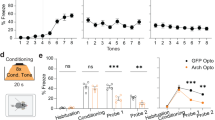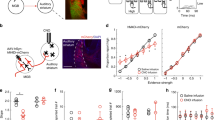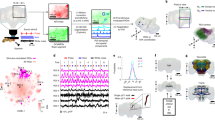Abstract
In the auditory inferior colliculus (IC), serotonin reflects features of context including the valence of social interactions, stressful events, and prior social experience. However, within the dorsal raphe nucleus (DRN; B6 + B7), the source of serotonergic projections to the IC has not been resolved at the level of DRN subregions. Additionally, few studies have investigated which DRN subregions are engaged during naturalistic, sensory-driven social behaviors. We employ traditional, retrograde tract-tracing approaches to comprehensively map the topographic extent of DRN-IC projection neurons in male and female mice. We combine this approach with immediate early gene (cFos) mapping in order to describe the functional properties of DRN subregions during contexts in which serotonin fluctuates within the IC. These approaches provide novel evidence that the dorsal (DRd) and lateral (DRl) B7 subregions are primarily responsible for serotonergic innervation of the IC; further, we show that this projection is larger in male than in female mice. Additionally, DRd and the ventral B7 (DRv) contained more transcriptionally active serotonergic neurons irrespective of behavioral context. Male mice had more active serotonergic neurons in DRd and DRv than females following sociosexual encounters. However, serotonergic activity was correlated with the expression of female but not male social behaviors. The topographic organization of the DRN-IC projection provides the anatomical framework to test a mechanism underlying context-dependent auditory processing. We further highlight the importance of including sex as a biological variable when describing the functional topography of DRN.






Similar content being viewed by others
References
Abrams JK, Johnson PL, Hollis JH, Lowry CA (2004) Anatomic and functional topography of the dorsal raphe nucleus. Ann NY Acad Sci 1018(1):46–57
Alonso A, Merchán P, Sandoval JE, Sánchez-Arrones L, Garcia-Cazorla A, Artuch R, Ferrán JL, Martínez-de-la-Torre M, Puelles L (2013) Development of the serotonergic cells in murine raphe nuclei and their relations with rhombomeric domains. Brain Struct Funct 218(5):1229–1277
Calhoon GG, Tye KM (2015) Resolving the neural circuits of anxiety. Nat Neurosci 18(10):1394–1404. https://doi.org/10.1038/nn.4101
Calizo LH, Akanwa A, Ma X, Pan Y-z, Lemos JC, Craige C, Heemstra LA, Beck SG (2011) Raphe serotonin neurons are not homogenous: electrophysiological, morphological and neurochemical evidence. Neuropharmacology 61(3):524–543
Cant NB, Oliver DL (2018) Overview of auditory projection pathways and intrinsic microcircuits. In: Oliver D, Cant N, Fay R, Popper A (eds) The mammalian auditory pathways. Springer, Cham, pp 7–39
Caras ML (2013) Estrogenic modulation of auditory processing: a vertebrate comparison. Front Neuroendocrinol 34(4):285–299. https://doi.org/10.1016/j.yfrne.2013.07.006
Challis C, Berton O (2015) Top-down control of serotonin systems by the prefrontal cortex: a path toward restored socioemotional function in depression. ACS Chem Neurosci 6(7):1040–1054. https://doi.org/10.1021/acschemneuro.5b00007
Chen C, Cheng M, Ito T, Song S (2018) Neuronal organization in the inferior colliculus revisited with cell-type-dependent monosynaptic tracing. J Neurosci 38(13):3318–3332
Clayton DF (2000) The genomic action potential. Neurobiol Learn Mem 74(3):185–216. https://doi.org/10.1006/nlme.2000.3967
Commons KG (2015) Two major network domains in the dorsal raphe nucleus. J Comp Neurol 523(10):1488–1504. https://doi.org/10.1002/cne.23748
Commons KG (2016) Ascending serotonin neuron diversity under two umbrellas. Brain Struct Funct 221(7):3347–3360. https://doi.org/10.1007/s00429-015-1176-7
Coomes DL, Schofield BR (2004) Separate projections from the inferior colliculus to the cochlear nucleus and thalamus in guinea pigs. Hear Res 191(1–2):67–78
Cooper MA, Grober MS, Nicholas CR, Huhman KL (2009) Aggressive encounters alter the activation of serotonergic neurons and the expression of 5-HT1A mRNA in the hamster dorsal raphe nucleus. Neuroscience 161(3):680–690. https://doi.org/10.1016/j.neuroscience.2009.03.084
Crawford LK, Craige CP, Beck SG (2010) Increased intrinsic excitability of lateral wing serotonin neurons of the dorsal raphe: a mechanism for selective activation in stress circuits. J Neurophysiol 103(5):2652–2663. https://doi.org/10.1152/jn.01132.2009
De Vries GJ (1990) Sex differences in neurotransmitter systems. J Neuroendocrinol 2(1):1–13
Ehret G, Koch M, Haack B, Markl HJN (1987) Sex and parental experience determine the onset of an instinctive behavior in mice. Naturwissenschaften 74(1):47–47
Fernandez SP, Cauli B, Cabezas C, Muzerelle A, Poncer J-C, Gaspar P (2016) Multiscale single-cell analysis reveals unique phenotypes of raphe 5-HT neurons projecting to the forebrain. Brain Struct Funct 221(8):4007–4025
Finton CJ, Keesom SM, Hood KE, Hurley LM (2017) What’s in a squeak? Female vocal signals predict the sexual behaviour of male house mice during courtship. Anim Behav 126:163–175
Forlano PM, Sisneros JA, Rohmann KN, Bass AH (2014) Neuroendocrine control of seasonal plasticity in the auditory and vocal systems of fish. Front Neuroendocrinol. https://doi.org/10.1016/j.yfrne.2014.08.002
Goodson JL (2005) The vertebrate social behavior network: evolutionary themes and variations. Horm Behav 48(1):11–22
Goodson JL, Kabelik D (2009) Dynamic limbic networks and social diversity in vertebrates: from neural context to neuromodulatory patterning. Front Neuroendocrinol 30(4):429–441. https://doi.org/10.1016/j.yfrne.2009.05.007
Goodson JL, Kingsbury MA (2013) What's in a name? Considerations of homologies and nomenclature for vertebrate social behavior networks. Horm Behav 64(1):103–112. https://doi.org/10.1016/j.yhbeh.2013.05.006
Grimsley JM, Hazlett EG, Wenstrup JJ (2013) Coding the meaning of sounds: contextual modulation of auditory responses in the basolateral amygdala. J Neurosci Off J Soc Neurosci 33(44):17538–17548. https://doi.org/10.1523/JNEUROSCI.2205-13.2013
Hale MW, Hay-Schmidt A, Mikkelsen JD, Poulsen B, Bouwknecht JA, Evans AK, Stamper CE, Shekhar A, Lowry CA (2008) Exposure to an open-field arena increases c-Fos expression in a subpopulation of neurons in the dorsal raphe nucleus, including neurons projecting to the basolateral amygdaloid complex. Neuroscience 157(4):733–748. https://doi.org/10.1016/j.neuroscience.2008.09.050
Hale MW, Lowry CA (2011) Functional topography of midbrain and pontine serotonergic systems: implications for synaptic regulation of serotonergic circuits. Psychopharmacology 213(2–3):243–264. https://doi.org/10.1007/s00213-010-2089-z
Hall IC, Rebec GV, Hurley LM (2010) Serotonin in the inferior colliculus fluctuates with behavioral state and environmental stimuli. J Exp Biol 213(Pt 7):1009–1017. https://doi.org/10.1242/jeb.035956
Hall IC, Sell GL, Chester EM, Hurley LM (2012) Stress-evoked increases in serotonin in the auditory midbrain do not directly result from elevations in serum corticosterone. Behav Brain Res 226(1):41–49. https://doi.org/10.1016/j.bbr.2011.08.042
Hall IC, Sell GL, Hurley LM (2011) Social regulation of serotonin in the auditory midbrain. Behav Neurosci 125(4):501–511. https://doi.org/10.1037/a0024426
Hanson JL, Hurley LM (2012) Female presence and estrous state influence mouse ultrasonic courtship vocalizations. PLoS ONE 7(7):e40782. https://doi.org/10.1371/journal.pone.0040782
Hanson JL, Hurley LM (2014) Context-dependent fluctuation of serotonin in the auditory midbrain: the influence of sex, reproductive state and experience. J Exp Biol 217(Pt 4):526–535. https://doi.org/10.1242/jeb.087627
Ho JM, Murray JH, Demas GE, Goodson JL (2010) Vasopressin cell groups exhibit strongly divergent responses to copulation and male-male interactions in mice. Horm Behav 58(3):368–377. https://doi.org/10.1016/j.yhbeh.2010.03.021
Huang KW, Ochandarena NE, Philson AC, Hyun M, Birnbaum JE, Cicconet M, Sabatini BL (2019) Molecular and anatomical organization of the dorsal raphe nucleus. Elife 8:e46464. https://doi.org/10.7554/eLife.46464
Hurley LM, Devilbiss DM, Waterhouse BD (2004) A matter of focus: monoaminergic modulation of stimulus coding in mammalian sensory networks. Curr Opin Neurobiol 14(4):488–495. https://doi.org/10.1016/j.conb.2004.06.007
Hurley LM, Pollak GD (2005) Serotonin modulates responses to species-specific vocalizations in the inferior colliculus. J Comp Physiol A Neuroethol Sens Neural Behav Physiol 191(6):535–546. https://doi.org/10.1007/s00359-005-0623-y
Hurley LM, Sullivan MR (2012) From behavioral context to receptors: serotonergic modulatory pathways in the IC. Front Neural Circuits 6:58. https://doi.org/10.3389/fncir.2012.00058
Giorgi A, Migliarini S, Galbusera A, Maddaloni G, Mereu M, Margiani G, Gritti M, Landi S, Trovato F, Bertozzi SM (2017) Brain-wide mapping of endogenous serotonergic transmission via chemogenetic fMRI. Cell Rep 21(4):910–918
Grandjean J, Corcoba A, Kahn MC, Upton AL, Deneris ES, Seifritz E, Helmchen F, Mann EO, Rudin M, Saab BJ (2019) A brain-wide functional map of the serotonergic responses to acute stress and fluoxetine. Nature Commun 10(1):350
Imai H, Steindler DA, Kitai ST (1986) The organization of divergent axonal projections from the midbrain raphe nuclei in the rat. J Comp Neurol 243(3):363–380. https://doi.org/10.1002/cne.902430307
Ito T, Bishop DC, Oliver DL (2009) Two classes of GABAergic neurons in the inferior colliculus. J Neurosci Off J Soc Neurosci 29(44):13860–13869. https://doi.org/10.1523/JNEUROSCI.3454-09.2009
Jacobs BL, Azmitia EC (1992) Structure and function of the brain serotonin system. Physiol Rev 72(1):165–229
Janušonis S, Fite KV, Foote W (1999) Topographic organization of serotonergic dorsal raphe neurons projecting to the superior colliculus in the Mongolian gerbil (Meriones unguiculatus). J Comp Neurol 413(2):342–355
Keesom SM, Hurley LM (2016) Socially induced serotonergic fluctuations in the male auditory midbrain correlate with female behavior during courtship. J Neurophysiol 115(4):1786–1796. https://doi.org/10.1152/jn.00742.2015
Keesom SM, Morningstar MD, Sandlain R, Wise BM, Hurley LM (2018) Social isolation reduces serotonergic fiber density in the inferior colliculus of female, but not male, mice. Brain Res 1694:94–103
Keesom SM, Sloss BG, Erbowor-Becksen Z, Hurley LM (2017) Social experience alters socially induced serotonergic fluctuations in the inferior colliculus. J Neurophysiol 118(6):3230–3241
Kingsbury MA, Kelly AM, Schrock SE, Goodson JL (2011) Mammal-like organization of the avian midbrain central gray and a reappraisal of the intercollicular nucleus. PLoS ONE 6(6):e20720. https://doi.org/10.1371/journal.pone.0020720
Klepper A, Herbert H (1991) Distribution and origin of noradrenergic and serotonergic fibers in the cochlear nucleus and inferior colliculus of the rat. Brain Res 557(1–2):190–201
Klink R, Robichaud M, Debonnel G (2002a) Gender and gonadal status modulation of dorsal raphe nucleus serotonergic neurons. Part I: effects of gender and pregnancy. Neuropharmacol 43(7):1119–1128
Klink R, Robichaud M, Debonnel G (2002b) Gender and gonadal status modulation of dorsal raphe nucleus serotonergic neurons. Part II Regulatory mechanisms. Neuropharmacology 43(7):1129–1138
Kobbert C, Apps R, Bechmann I, Lanciego JL, Mey J, Thanos S (2000) Current concepts in neuroanatomical tracing. Prog Neurobiol 62(4):327–351
Lee S-B, Lee HS, Waterhouse BD (2008) The collateral projection from the dorsal raphe nucleus to whisker-related, trigeminal sensory and facial motor systems in the rat. Brain Res 1214:11–22
Lin FG, Galindo-Leon EE, Ivanova TN, Mappus RC, Liu RC (2013) A role for maternal physiological state in preserving auditory cortical plasticity for salient infant calls. Neuroscience 247:102–116
Liu RC, Schreiner CE (2007) Auditory cortical detection and discrimination correlates with communicative significance. PLoS Biol 5(7):e173
Lowry CA (2002) Functional subsets of serotonergic neurones: implications for control of the hypothalamic-pituitary-adrenal axis. J Neuroendocrinol 14(11):911–923
Marlin BJ, Mitre M, D’amour JA, Chao MV, Froemke RC (2015) Oxytocin enables maternal behaviour by balancing cortical inhibition. Nature 520(7548):499–504
McCarthy MM, Woolley CS, Arnold AP (2017) Incorporating sex as a biological variable in neuroscience: what do we gain. Nat Rev Neurosci 18(12):707–708
McDevitt RA, Tiran-Cappello A, Shen H, Balderas I, Britt JP, Marino RA, Chung SL, Richie CT, Harvey BK, Bonci A (2014) Serotonergic versus nonserotonergic dorsal raphe projection neurons: differential participation in reward circuitry. Cell Rep 8(6):1857–1869. https://doi.org/10.1016/j.celrep.2014.08.037
McIntosh AR (2004) Contexts and catalysts. Neuroinformatics 2(2):175–181
Muzerelle A, Scotto-Lomassese S, Bernard JF, Soiza-Reilly M, Gaspar P (2016) Conditional anterograde tracing reveals distinct targeting of individual serotonin cell groups (B5–B9) to the forebrain and brainstem. Brain Struct Funct 221(1):535–561
Namburi P, Al-Hasani R, Calhoon GG, Bruchas MR, Tye KM (2016) Architectural representation of valence in the limbic system. Neuropsychopharmacol Off Publ Am Coll of Neuropsychopharmacol 41(7):1697–1715. https://doi.org/10.1038/npp.2015.358
Nevue AA, Elde CJ, Perkel DJ, Portfors CV (2015) Dopaminergic input to the inferior colliculus in mice. Front Neuroanat 9:168
Niederkofler V, Asher TE, Okaty BW, Rood BD, Narayan A, Hwa LS, Beck SG, Miczek KA, Dymecki SM (2016) Identification of serotonergic neuronal modules that affect aggressive behavior. Cell Rep 17(8):1934–1949. https://doi.org/10.1016/j.celrep.2016.10.063
O'Hearn E, Molliver ME (1984) Organization of raphe-cortical projections in rat: a quantitative retrograde study. Brain Res Bull 13(6):709–726
Ogawa SK, Cohen JY, Hwang D, Uchida N, Watabe-Uchida M (2014) Organization of monosynaptic inputs to the serotonin and dopamine neuromodulatory systems. Cell Rep 8(4):1105–1118. https://doi.org/10.1016/j.celrep.2014.06.042
Okere CO, Waterhouse BD (2006) Activity-dependent heterogeneous populations of nitric oxide synthase neurons in the rat dorsal raphe nucleus. Brain Res 1086(1):117–132
Paxinos G, Franklin KB (2004) The mouse brain in stereotaxic coordinates. Gulf Professional Publishing, Houston
Peruzzi D, Bartlett E, Smith PH, Oliver DL (1997) A monosynaptic GABAergic input from the inferior colliculus to the medial geniculate body in rat. J Neurosci 17(10):3766–3777
Petersen CL, Hurley LM (2017) Putting it in context: linking auditory processing with social behavior circuits in the vertebrate brain. Integr Comp Biol 57(4):865–877
Pollak Dorocic I, Furth D, Xuan Y, Johansson Y, Pozzi L, Silberberg G, Carlen M, Meletis K (2014) A whole-brain atlas of inputs to serotonergic neurons of the dorsal and median raphe nuclei. Neuron 83(3):663–678. https://doi.org/10.1016/j.neuron.2014.07.002
Ren J, Friedmann D, Xiong J, Liu CD, Ferguson BR, Weerakkody T, DeLoach KE, Ran C, Pun A, Sun Y (2018) Anatomically defined and functionally distinct dorsal raphe serotonin sub-systems. Cell 175(2):472–487
Roche M, Commons KG, Peoples A, Valentino RJ (2003) Circuitry underlying regulation of the serotonergic system by swim stress. J Neurosci 23(3):970–977
Rubinow DR, Schmidt PJ, Roca CA (1998) Estrogen–serotonin interactions: implications for affective regulation. Biol Psychiat 44(9):839–850
Schofield BR, Cant NB (1999) Descending auditory pathways: projections from the inferior colliculus contact superior olivary cells that project bilaterally to the cochlear nuclei. J Comp Neurol 409(2):210–223
Schofield BR, Hurley L (2018) Circuits for modulation of auditory function. In: Oliver D, Cant N, Fay R, Popper A (eds) The mammalian auditory pathways. Springer, Cham, pp 235–267
Schofield BR, Motts SD, Mellott JG (2011) Cholinergic cells of the pontomesencephalic tegmentum: connections with auditory structures from cochlear nucleus to cortex. Hear Res 279(1–2):85–95
Schofield BR, Schofield RM, Sorensen KA, Motts SD (2007) On the use of retrograde tracers for identification of axon collaterals with multiple fluorescent retrograde tracers. Neuroscience 146(2):773–783. https://doi.org/10.1016/j.neuroscience.2007.02.026
Schwarz LA, Miyamichi K, Gao XJ, Beier KT, Weissbourd B, DeLoach KE, Ren J, Ibanes S, Malenka RC, Kremer EJ (2015) Viral-genetic tracing of the input-output organization of a central noradrenaline circuit. Nature 524(7563):88–92
Shansky RM, Woolley CS (2016) Considering sex as a biological variable will be valuable for neuroscience research. J Neurosci 36(47):11817–11822
Steinbusch H, Nieuwenhuys R (1981) Localization of serotonin-like immunoreactivity in the central nervous system and pituitary of the rat, with special references to the innervation of the hypothalamus. In: Haber B, Gabay S, Issidorides MR, Alivisatos SGA (eds) Serotonin. Springer, Boston, pp 7–35
Steinbusch HWM (1981) Distribution of serotonin-immunoreactivity in the central nervous system of the rat—cell bodies and terminals. Neuroscience 6(4):557–618
Vasudeva RK, Lin RC, Simpson KL, Waterhouse BD (2011) Functional organization of the dorsal raphe efferent system with special consideration of nitrergic cell groups. J Chem Neuroanat 41(4):281–293
Villar MJ, Vitale ML, Hökfelt T, Verhofstad AA (1988) Dorsal raphe serotoninergic branching neurons projecting both to the lateral geniculate body and superior colliculus: a combined retrograde tracing–immunohistochemical study in the rat. J Comp Neurol 277(1):126–140
Warren MR, Spurrier MS, Roth ED, Neunuebel JP (2018) Sex differences in vocal communication of freely interacting adult mice depend upon behavioral context. PLoS ONE 13(9):e0204527
Waselus M, Valentino RJ, Van Bockstaele EJ (2011) Collateralized dorsal raphe nucleus projections: a mechanism for the integration of diverse functions during stress. J Chem Neuroanat 41(4):266–280. https://doi.org/10.1016/j.jchemneu.2011.05.011
Waterhouse BD, Mihailoff GA, Baack JC, Woodward DJ (1986) Topographical distribution of dorsal and median raphe neurons projecting to motor, sensorimotor, and visual cortical areas in the rat. J Comp Neurol 249(4):460–476
Weissbourd B, Ren J, DeLoach KE, Guenthner CJ, Miyamichi K, Luo L (2014) Presynaptic partners of dorsal raphe serotonergic and GABAergic neurons. Neuron 83(3):645–662. https://doi.org/10.1016/j.neuron.2014.06.024
Acknowledgements
The authors wish to thank Dr. Jim Powers and the Indiana University Light Microscopy Imaging Center for technical assistance, Dr. Kelly Ronald for statistical advice, members of the Hurley Lab, and two anonymous reviewers whose comments improved this manuscript. This work was supported in part by funding from the National Institute of Health Common Themes in Reproductive Diversity Training Grant (5T32HD049336-12; CLP), Center for the Integrative Study in Animal Behavior (CLP; AK) and Indiana University (LMH).
Funding
While some of the experiments described in this manuscript were being performed, Christopher L. Petersen received funding in the form of stipend support from the National Institute of Health Common Themes in Reproductive Diversity Training Grant (5T32HD049336-12). Reagents used in this study were purchased with funds provided to Christopher L. Petersen and Alexander Koo from the Indiana University Center for the Integrative Study of Animal Behavior, and laboratory startup funds to Laura M. Hurley.
Author information
Authors and Affiliations
Contributions
Conceptualization: CLP, LMH; Investigation: CLP, AK; Formal analysis: CLP, AK, BP; Resources: CLP, AK, LMH; Wrote the manuscript: CLP; Supervised the project: LMH.
Corresponding author
Ethics declarations
Conflict of interest
The authors declare no conflicts of interest.
Ethical approval
This article does not contain any studies with human participants performed by any of the authors. All applicable international, national, and/or institutional guidelines for the care and use of animals were followed. All procedures performed in studies involving animals were in accordance with the ethical standards of the Bloomington Animal Care and Use Committee (BIACUC; Protocol # 15-021).
Additional information
Publisher's Note
Springer Nature remains neutral with regard to jurisdictional claims in published maps and institutional affiliations.
Electronic supplementary material
Below is the link to the electronic supplementary material.
Rights and permissions
About this article
Cite this article
Petersen, C.L., Koo, A., Patel, B. et al. Serotonergic innervation of the auditory midbrain: dorsal raphe subregions differentially project to the auditory midbrain in male and female mice. Brain Struct Funct 225, 1855–1871 (2020). https://doi.org/10.1007/s00429-020-02098-3
Received:
Accepted:
Published:
Issue Date:
DOI: https://doi.org/10.1007/s00429-020-02098-3




